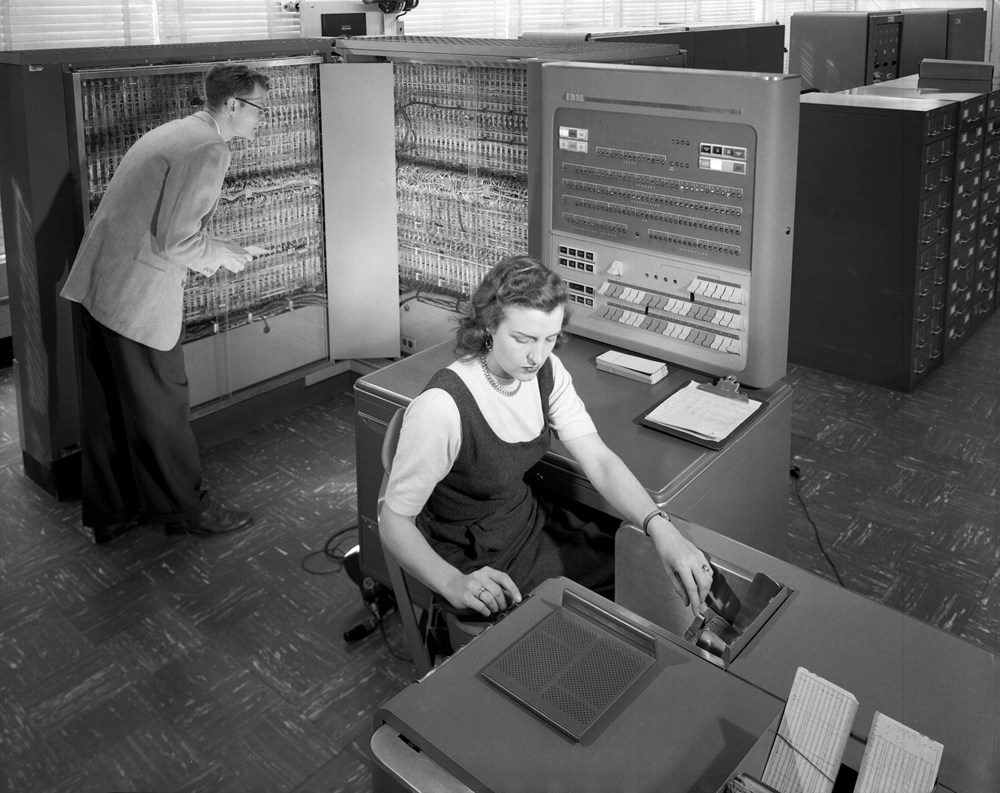Space History Photo: Early NASA Supercomputer

In this historical photo from the U.S. space agency, a man and woman are shown on March 21, 1957 working with an IBM type 704 electronic data processing machine used for making computations for aeronautical research.
While desktop computers and even smartphones of today can pack the power of supercomputers from the 1950s, the IBM type 704 played an important role in the history of computers. It was the “first mass-produced computer with core memory and floating-point arithmetic,” according to an account at Columbia University.
NASA has long sought to use the most powerful computers of each era, to crunch incredible volumes of data generated by astronomy observations as well as the design, testing, creation and managing of spaceflight machines and missions.
Each weekday, SPACE.com looks back at the history of spaceflight through photos (archive).
Get the Space.com Newsletter
Breaking space news, the latest updates on rocket launches, skywatching events and more!
Join our Space Forums to keep talking space on the latest missions, night sky and more! And if you have a news tip, correction or comment, let us know at: community@space.com.

The National Aeronautics and Space Administration (NASA) is the U.S. government agency in charge of the civilian space program as well as aeronautics and aerospace research. Founded in 1958, NASA is a civilian space agency aimed at exploring the universe with space telescopes, satellites, robotic spacecraft, astronauts and more. The space agency has 10 major centers based across the U.S. and launches robotic and crewed missions from the Kennedy Space Center in Cape Canaveral Florida. It's astronaut corps is based at the Johnson Space Center in Houston. To follow NASA's latest mission, follow the space agency on Twitter or any other social channel, of visit: nasa.gov.









